Continuing from the previous blog, we are going to discuss how a brush is made, and what are some criteria for distinguishing brushes in order to make good selections.
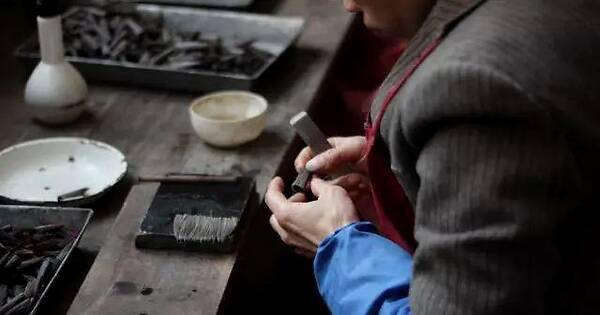
How Are Ink Brushes Made
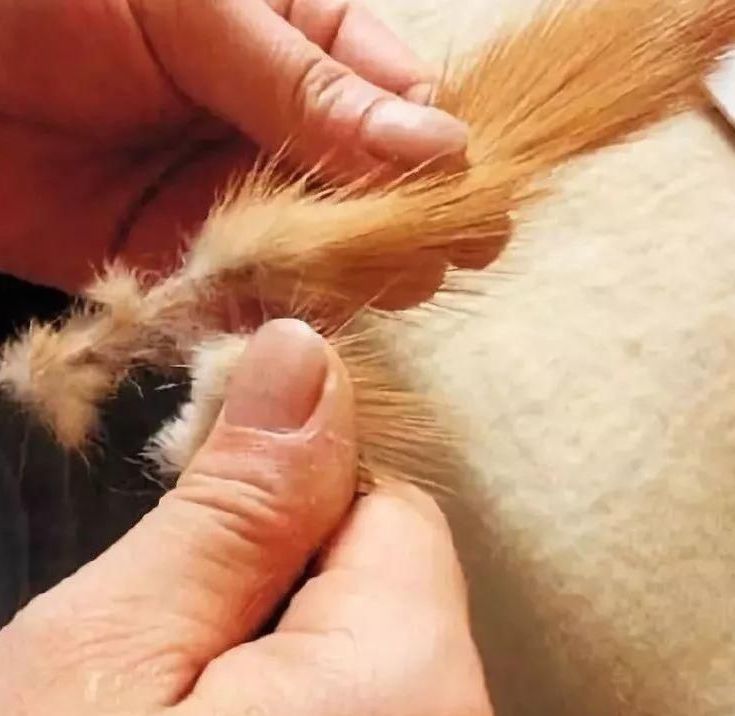
Making ink brushes is not an easy task – some say there are over 120 processes involved in making one. Some also say that all the bamboo stem brushes are hand made, because machines can only shape wood. I do not know how much truth there is in this statement, but a good brush requires true skills and is indeed hand made.
The main and the most crucial task is the making of a brush head. After selecting the brush materials (such as which hair to use), the craftsman has to remove the stench from it first, taking about two weeks of soaking, and then comb the hair to remove the unusable parts, such as the fluff hidden under the long hairs, to ensure the usability of all brush hairs. Such combing could be repeated hundreds of times, so that what remains are the best. After removing the fat from hairs, they are then cut and arranged into usable sheets.
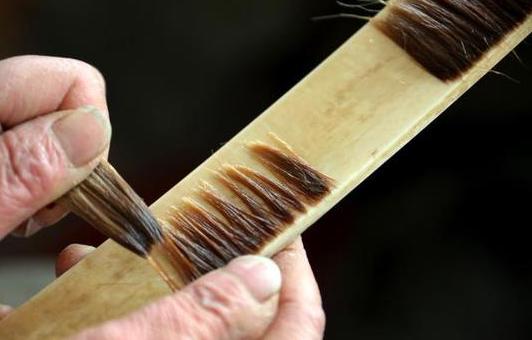
From the user‘s perspective, I must underline the importance of the brush head production processes, the stem of a brush can be made from various materials, some fancier than others, but the head is the only part that matters. The exact length of each hair within a brush head matter, where each hair length is located also matter – all the hairs need to work together as one in the painting or calligraphy making, and a good brush can be made possible to contain just the right amount of liquid for just the right amount of brush strokes. If the brushes are low in quality, no matter how skilled a painter is, he or she would never make the correct strokes with it.
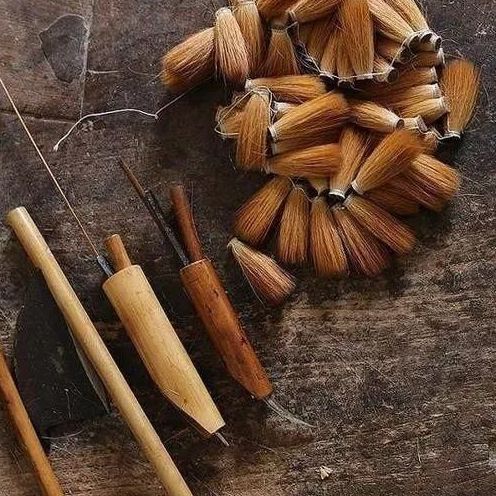
Once the hair sheets are ready, they may be mixed with another sheet to make the previously mentioned mixed hair brush (generally weasel hair or synthetic hair surrounded by goat hair), combed carefully together, and then rolled into the brush head shape that we are familiar with. They are tested many times to determine the location of the center of the brush tip, whether there are uneven hairs within a brush head, and once it is all satisfactory, a brush head is tied and will be hanging for several days so that the ties are tight.
As the brush heads get ready, brush stems are selected. Naturally bamboo is the perfect option, it is light weight are very sturdy, but for certain brush types, the stems may be selected for their thickness, straightness and even patterns. Once the brush heads are fixed in the stems, this new brush also has to be tested to see whether the hairs work flexibly, or if there are bad quality hair that went unnoticed. Once satisfactory, a new brush is born!
The Four Criteria of Brush Selection
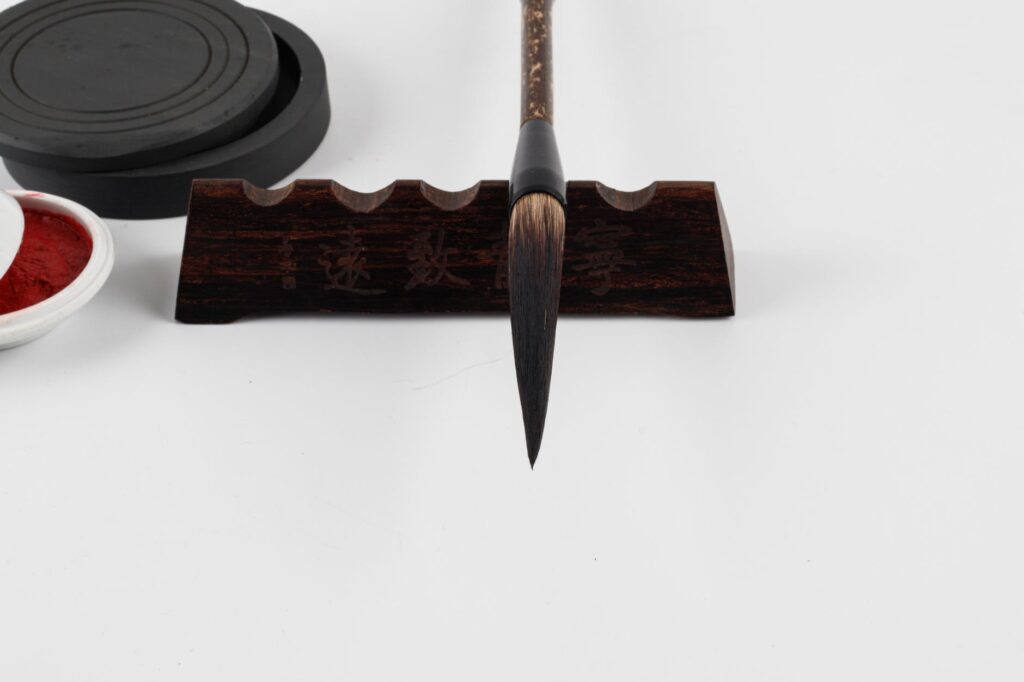
1. Sharpness
A good brush tip is sharp once moist, this means all the hairs group towards the very same point. Having brush hairs pointing towards the same tip allows us to draw lines or make brush strokes with the least effort, and all lines would come out smooth. Even for a skilled painter, a bad brush create spilts in a brush line just as easily.
2. Roundness
The belly of an ink brush must be full. By full I mean that there is enough actual hair that is long enough naturally filling the brush body. I personally have used quite a few rather “empty” brushes, that has no body but a few very sharp tip hairs; Some on the other hand have very short inner layers, the painting brush becomes a fluffy-headed makeup brush after each stroke. If a brush is not “full”, the brush strokes would lack substance, as if there is not enough gravity to support its weight, every brush stroke floats. With a full figured brush, we can create thicker areas of a brush stroke with ease, allowing changes to appear in each brush stroke.
3. Tidiness
This refers to the brush tips, when flattened, the brush hair should neatly form one straight line. In my previous experiences using cheaper or poor quality brushes, the inner layer of hairs may be rather untidy, they may be shorter or have fluffy hair (the kind that needed to be removed during its making), the brush may appear full and even flat from the surface, but such brushes cannot create decent works. With untidy brushes, we cannot create smooth lines or brush strokes at all, the brush strokes may resemble those made by a mop.
4. Toughness
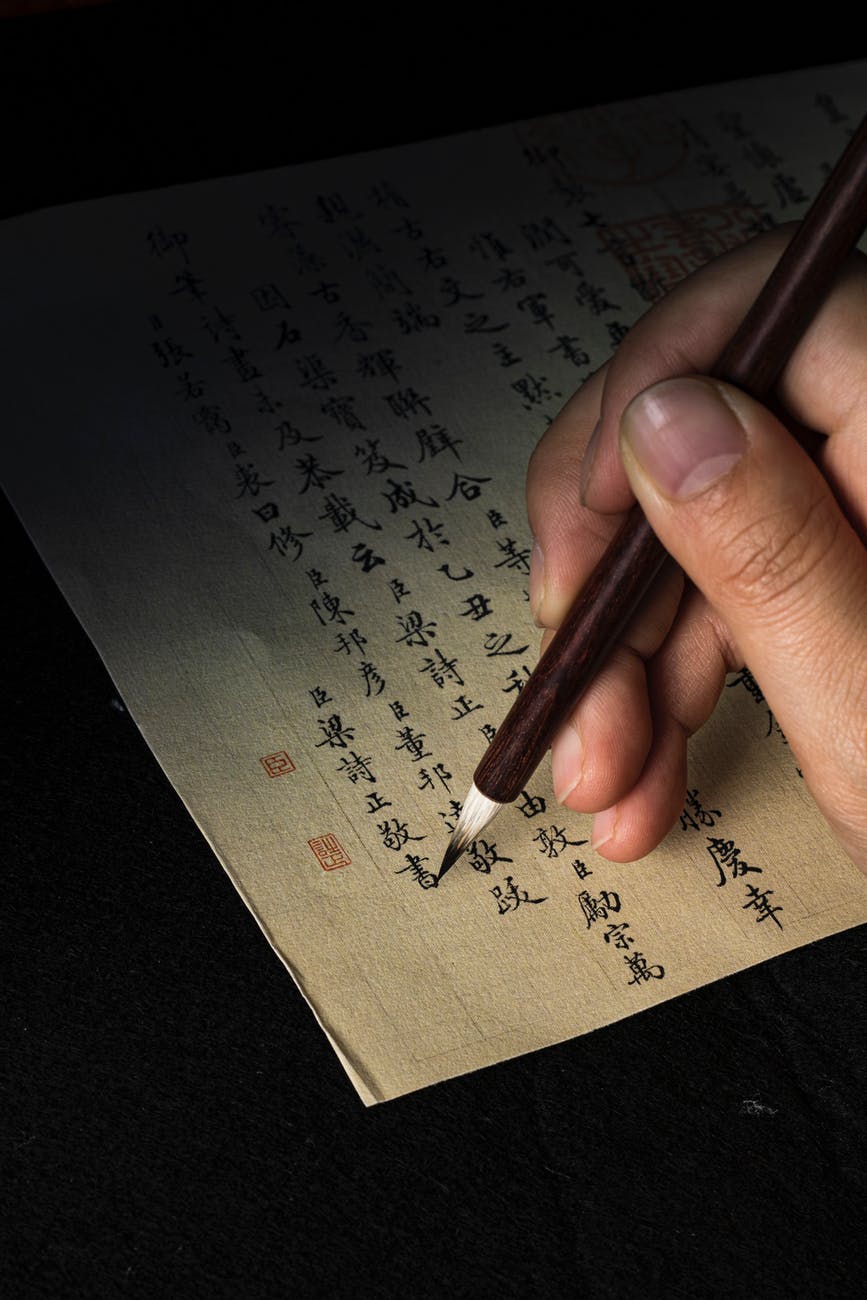
The last but not least tip of brush selection is to examine the strength of the brush hair. Once a brush stroke has been created, pay attention to your brush head, see whether it can slowly return to more or less its original position. There are differences between the soft hair brushes and tough hair brushes in this test, because goat hair soft brushes may need more help in general to return to its previous position. However, when using a brush, either style of brushes allows the user to inject strength inside each brush stroke. Feeling the strength of a brush could take some experience and practice, but if your brush appears to be too easily shaped, as if using cotton to write, then perhaps this brush is not a good one.
The length of the brush hair also affects the creation of a brush stroke, especially in writing Chinese calligraphy, the five major scripts have different requirements. Although a safe choice for a beginner of any script is the mixed hair brush, generally the brush heads are medium in length, and the hair quality is between soft and hard, easy to manage. For painting purposes however, both soft and hard hairs should be required, medium length for a beginning use would suffice. Brush sizes would matter in this case, the most common and useful types would be medium size (in thickness), but a larger brush (goat hair or mixed hair) and a smaller brush (weasel hair) would come very handy for almost any type of painting subjects.
If you are a fan of pretty brushes, then choosing brush stems can give you quite some pleasure. Remember however, it is the brush head that matter the most for using. These blogs hopefully can bring you some good tips regarding brush selection, happy inking!
Enjoy such cultural discussions? Have comments? I look forward to hearing from you!
Buy Artworks | Learn Brush Painting | Learn Chinese Calligraphy
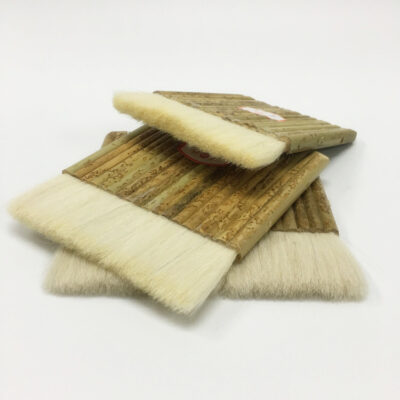

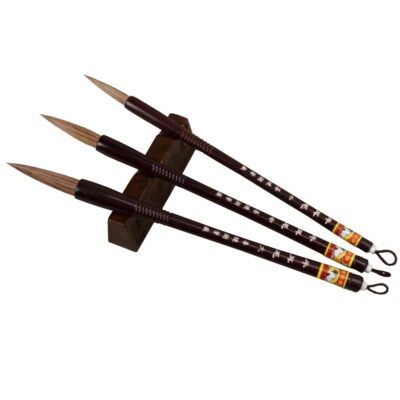
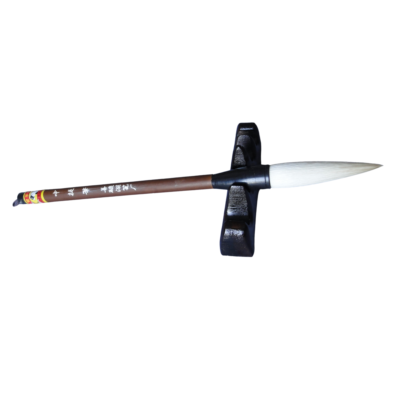
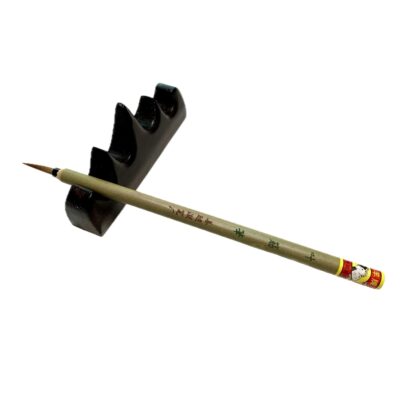
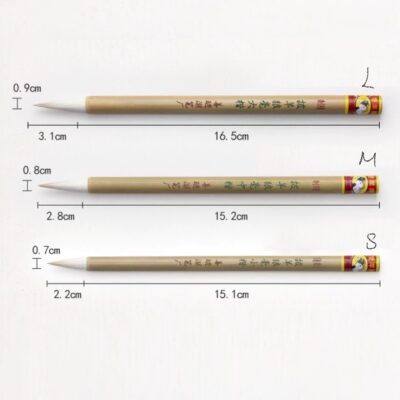
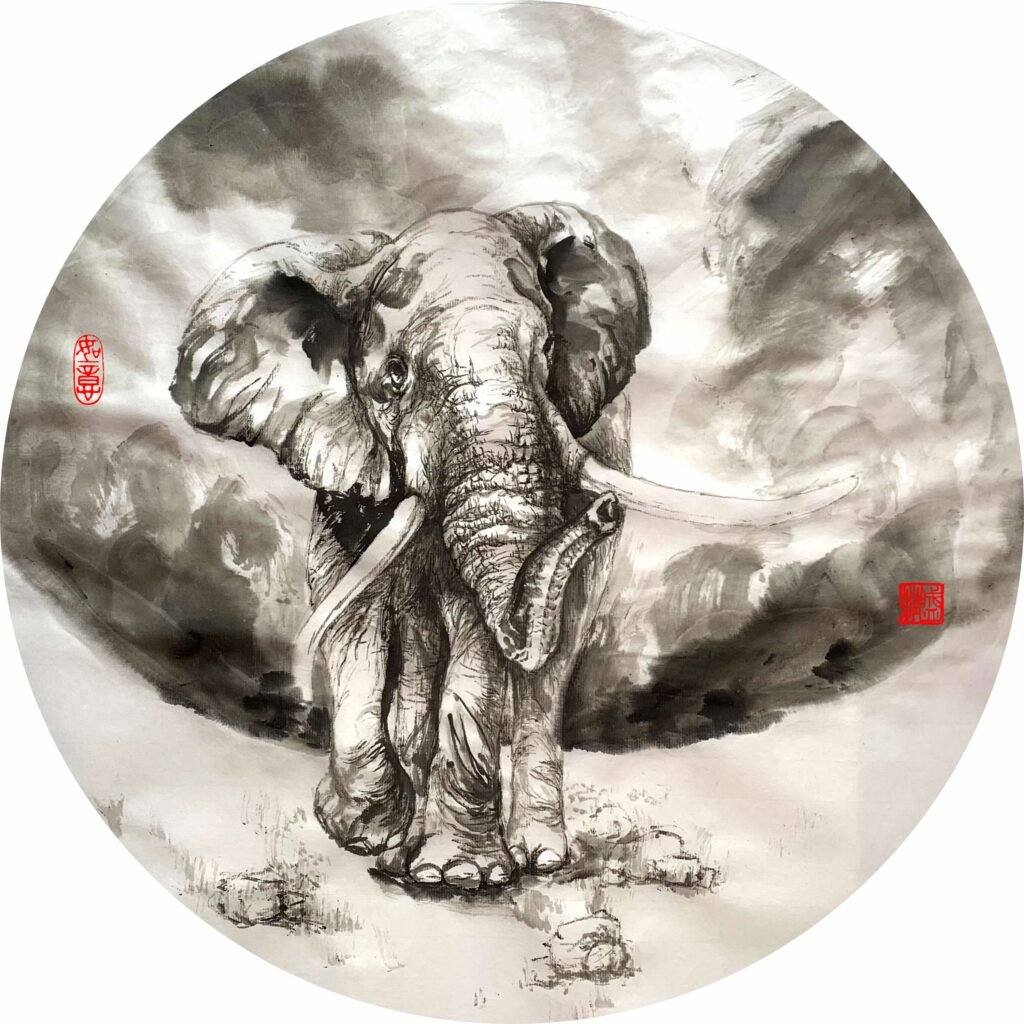
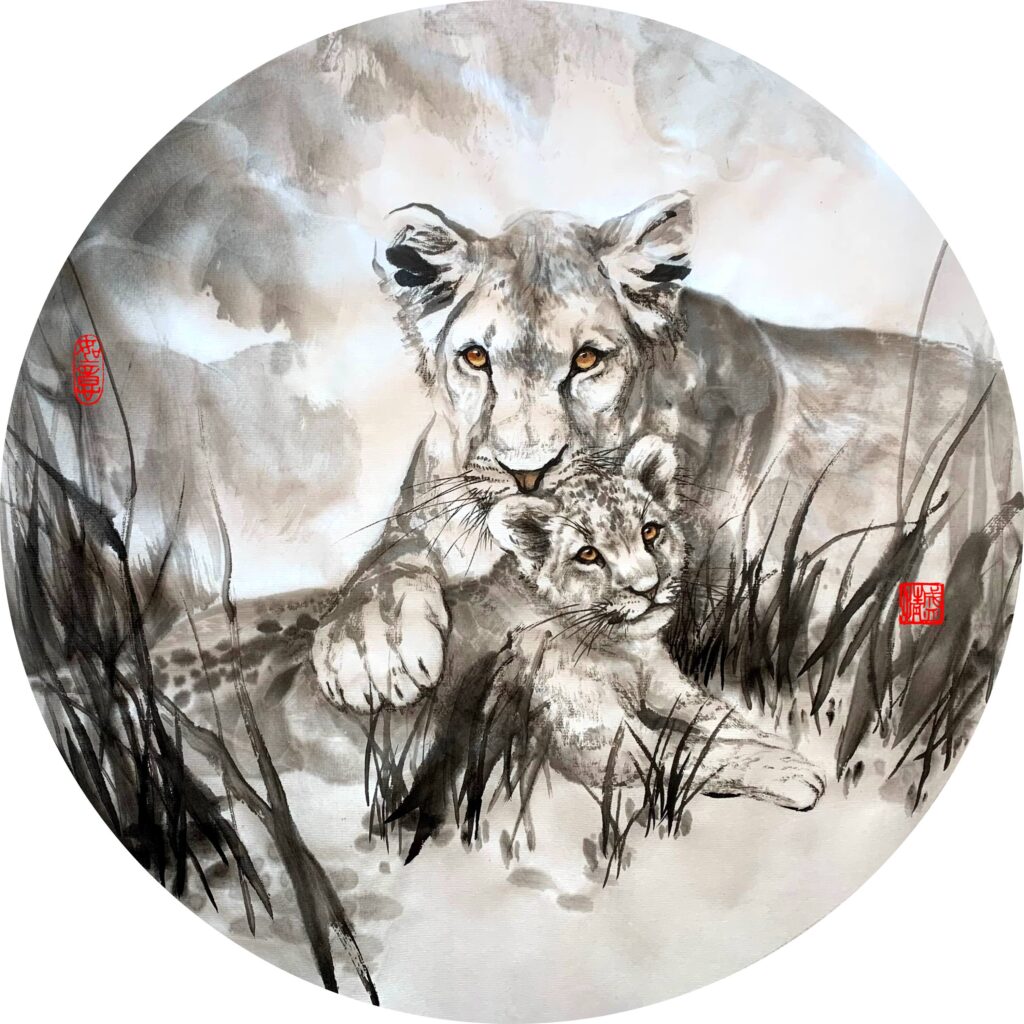
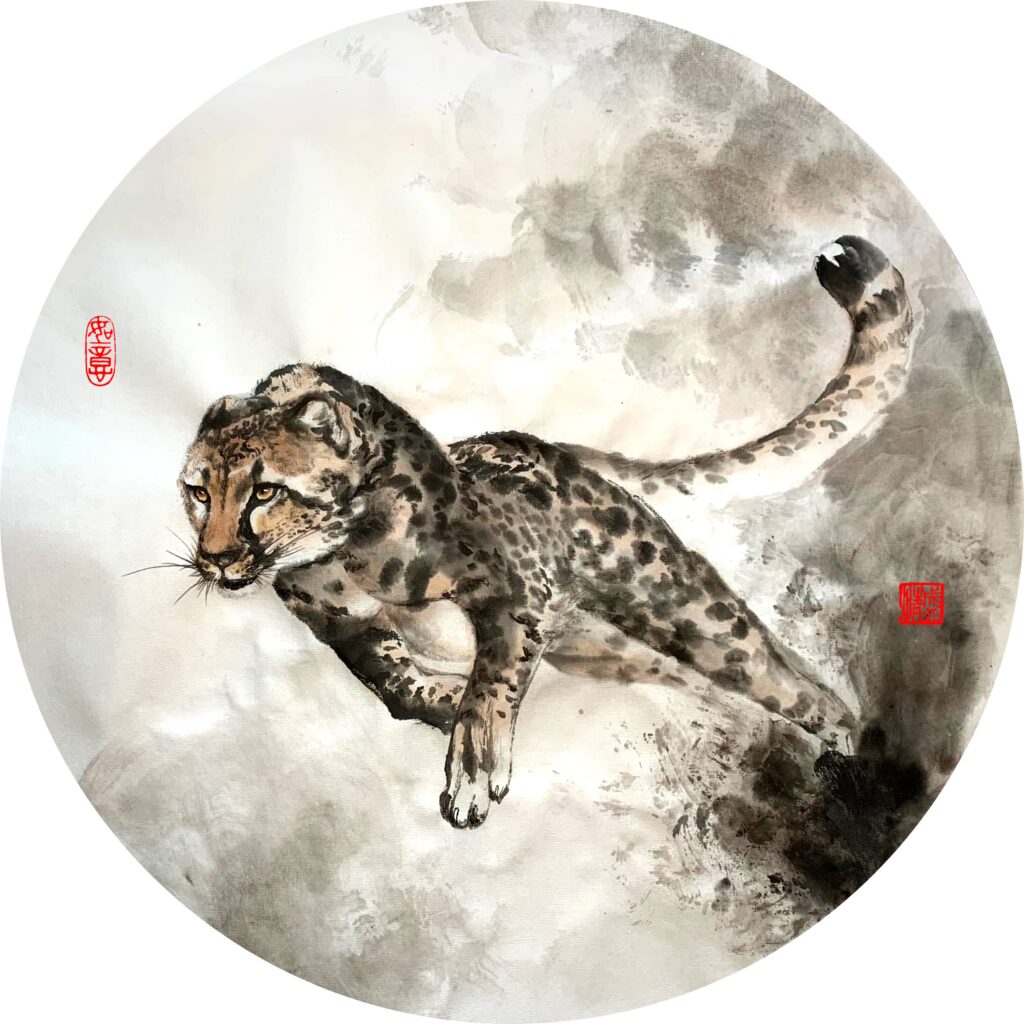
Pingback: Mindful Art, Zen Home | InkDifferent Studio